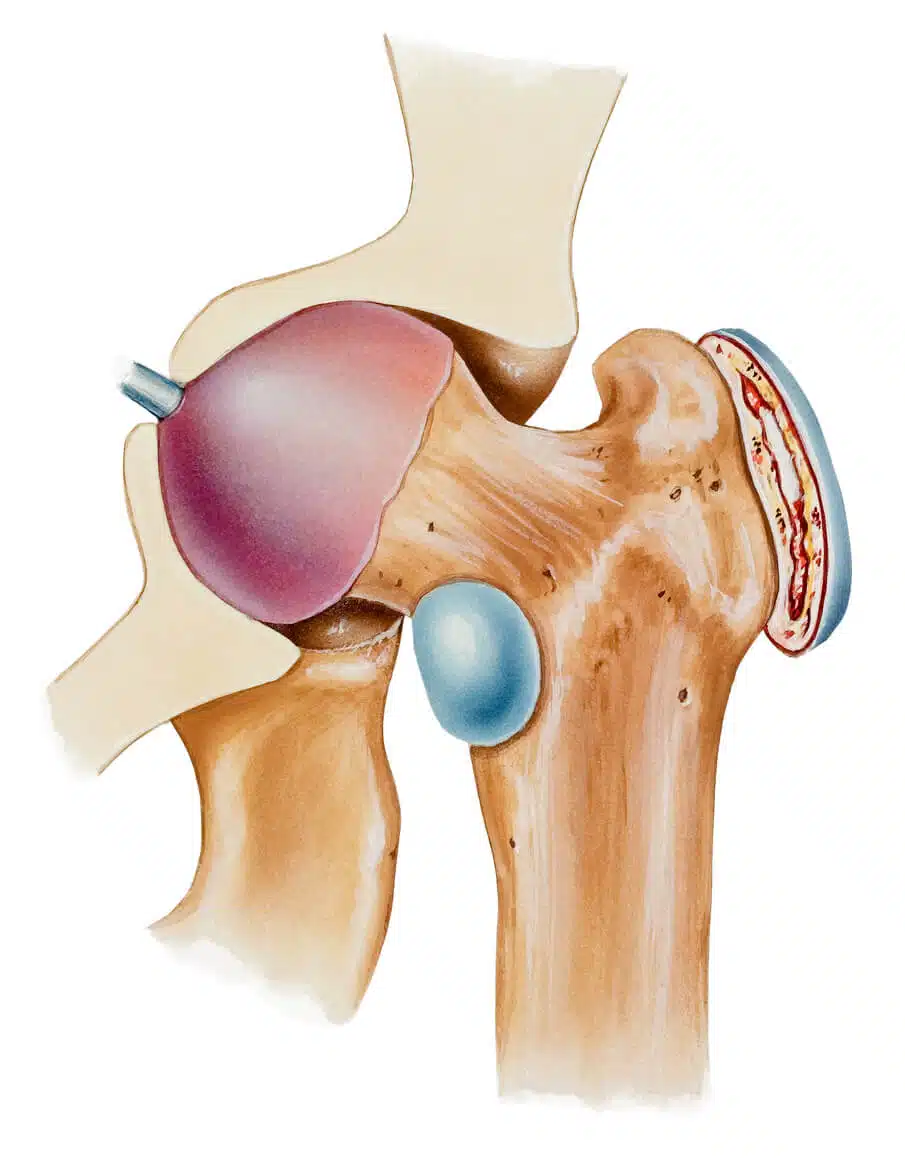
Hip bursitis can make it hard to move around and enjoy your day without pain. Sometimes, it feels like mild discomfort, while other times, it is so bad it affects your sleep. This happens because the bursae, small cushions in your hip that help things move smoothly become inflamed.
Figuring out what stage your condition is in is an important first step to finding the right treatment. This article will guide you through different treatments for each stage, helping you manage the pain.
Early Stage (Mild Acute Phase)
The early stage of hip bursitis is usually marked by mild pain and tenderness around the affected hip.
Activities such as walking, climbing stairs, or even lying on one side may trigger discomfort. Swelling may also appear, although it is often minimal at this stage. Early detection and action are crucial at this phase to prevent the condition from worsening.
Here are treatment options for the early stage.
Rest and Activity Changes
Giving your hip sufficient time to heal is key. Avoid activities that aggravate the condition, including repetitive motions that place stress on the joint. Incorporate rest into your routine to relieve the area of strain.
Cold Therapy
Applying ice packs to the affected area for 15-20 minutes several times a day reduces inflammation and soothes pain. Use a barrier, such as a cloth, to protect the skin from frostbite.
Over-the-Counter Pain Relievers
Medications such as ibuprofen or naproxen can help manage inflammation and provide relief. Follow dosage instructions carefully and consult your doctor before prolonged use.
Stretching and Gentle Exercises
Light exercises that improve flexibility may alleviate tension without straining the area. This includes activities like hip stretches or yoga. Consult a physical therapist for guidance on safe movements.
Moderate Stage (Chronic or Persistent Phase)
When left untreated, hip bursitis may advance to a moderate stage. During this phase, the pain becomes more constant and may limit mobility. The swelling and tenderness around the hip can become pronounced. In turn, daily activities may feel increasingly challenging.
Here are treatment options for the moderate stage.
Physical Therapy
Consulting a physical therapist at this stage is highly recommended. They can develop a customized exercise plan to strengthen the surrounding muscles and improve joint stability. For example, targeted exercises for hip pain, like glute bridges and hip abductions, are often helpful.
Anti-Inflammatory Medications
If NSAIDs alone are insufficient, a healthcare provider might recommend prescription-strength medication. These can help mitigate pain and swelling during the moderate stage.
Corticosteroid Injections
Corticosteroid shots deliver anti-inflammatory medication directly into the affected area. These injections provide faster and more lasting relief compared to oral medications. A physician will determine if this treatment is appropriate for your case.
Assistive Devices
Using a cane or crutches briefly can minimize pressure on your hip joint. This gives the bursae time to heal and reduces wear and tear. Assistive devices vary and can include:
- Wheelchairs
- Crutches
- Canes
- Mobility scooters
The one you use will depend on your personal needs.
Severe Stage (Advanced or Recurrent Hip Bursitis)
When hip bursitis reaches its severe stage, the pain often becomes intense and may even interfere with sleep. This stage presents recurrent flare-ups of symptoms that do not respond well to traditional therapies. Severe hip bursitis requires more advanced medical procedures.
Here are treatment options for the severe stage.
Surgical Intervention
Though rare, surgery may be necessary when all other treatment options have failed. A bursectomy, the removal of the inflamed bursa, is performed to eliminate persistent pain. Recovery may take several weeks, but patients often experience substantial improvement after healing. Hip replacement surgery may also be considered for some cases.
Long-Term Physical Rehabilitation
After surgery or advanced treatments, people must commit to rehab programs. These are designed to restore full mobility and prevent future flare-ups. This typically involves working closely with a physical therapist to build muscle strength and flexibility.
Overall Lifestyle Adjustments for All Stages
Beyond stage-specific treatments, certain lifestyle changes can help manage and even prevent hip bursitis. These adjustments can complement medical treatments to provide more holistic care.
Healthy Weight Maintenance
Carrying excess weight puts additional strain on your joints, including the hip. Maintain a healthy weight through a balanced diet and appropriate exercise.
This can reduce the risk of developing or worsening hip bursitis.
Ergonomic Support
Ensure that your furniture, particularly chairs, is ergonomically supportive. Proper hip alignment and cushioning can improve joint health over time.
Supportive Footwear
Replace unsupportive shoes with footwear that offers adequate cushioning and arch support. High-heeled shoes should be avoided, as they may exacerbate joint issues and affect posture. Getting custom orthotics to improve the support in your footwear can also benefit you.
Treatments for Hip Bursitis in Bismarck, ND
Hip bursitis does not have to stop you from doing what you enjoy. By knowing which stage your condition is in, you can find the right treatment to help you heal. From rest and ice to physical therapy or even hip replacement, there is a solution for hip bursitis.
When it comes to your health, do not take risks. The experts at The Bone & Joint Center are here to offer the care and treatments you need to feel better fast. Our board-certified orthopedic surgeons, Dr. Timothy J. Bopp and Dr. Brian P. Dahl, will ensure you get the post-op care you need. We make sure our patients are prescribed the best and most comprehensive program to improve their condition.
To schedule a consultation at one of our 11 locations across North Dakota, you may call us at (701) 946-7400/(866) 900-8650 or use our appointment request form.
We look forward to serving you!

